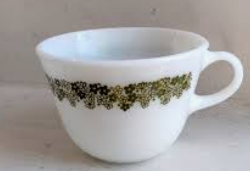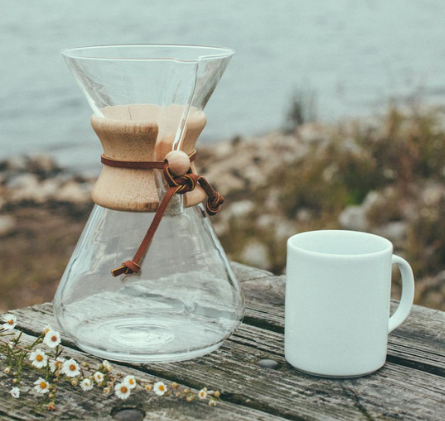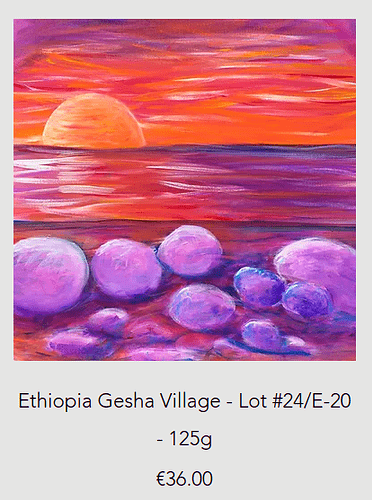GTFOOH
The local place I buy from went all out on equipment for their new cafe. They have a gigantic Mill City and Ozturkbay in the roasting room. Dual Sanremo Cafe Racer on the barista bar with EK43 shorts. Easily I counted $100k worth of equipment just for roasting and brewing. Still hand pouring ceramic V60 02 though.
You do not even deep frie yo coffee, eww
This doesn’t happen often but I’m brewing an Ethiopia ultra light that appears to be hypersensitive to buffer. In my experience, most coffees do fine if you’re in the 40 +/- 10 ppm range, and therefore this type of adjustment is probably one of the last you should make unless you truly suspect a buffer problem. Despite being dull with no discernible flavors and only mild acidity, it didn’t have the characteristic chalky / heavy profile I associate with too much buffer. So no real reason to suspect buffer, but after brewing half the bag changing everything else and getting nowhere it was worth a shot.
Let me explain the “quick” method I use for this. I’ve written before that diluting Evian with distilled water at 1:6 should give you a reasonable brew water spec. I chose that recipe based on simplicity and availability. It should produce a buffer of about 41 ppm (alkalinity as CaCO3), although I suspect that could swing by a few points if there’s batch variability (their annual water quality reports have been incredibly consistent).
Anyway, the point is that we don’t need exactitude on the alkalinity number: pick a reasonable starting point (1:6) and then adjust by taste. If your acidity is rendering with a sour lemon characteristic, try 1:5 minus. If it’s chalky or has bland / muted acidity, try 1:7 plus. The published number we’re supposedly working down from is 290 ppm:
1:4 ratio = 290 / 5 = 58 ppm
1:5 ratio = 290 / 6 = 48 ppm
1:6 ratio = 290 / 7 = 41 ppm
1:7 ratio = 290 / 8 = 36 ppm
1:8 ratio = 290 / 9 = 32 ppm
I guess one thing to be aware of is that we aren’t getting “equal” adjustments up and down by moving the ratio in integers. In other words, the move from 1:6 → 1:4 isn’t the same absolute alkalinity change as the move from 1:6 → 1:8. I picked round numbers for the example but in practice you might go between integers, which is easy to do at the water volumes we’re using to brew.
^ After going through about 8 oz of this 16 oz bag I’ve finally found something repeatable. The only water blend that’s working for me is 1:6.25 but only if I temp it down to about 195F. I’m also grinding legit coarse to get the clarity. Anyway, the larger point here is that this coffee just isn’t that good. All of that work to get the acidity to render correctly and cleanly and it’s pleasant but really average. These are the types of coffees you should never buy except that’s not really possible to know in advance.
yes please figure this out for me thnx
If you can find a green price and/or cupping score that should give it away. Most places don’t provide that (Onyx the exception) but you can sometimes trace it back to Cafe Imports or whoever with enough searching. Like I said previously, the only way we’re gonna be able to drink the amazing stuff (> 87) for non-insane prices going forward is by roasting it ourselves.
Coffee Quest find that’s appeared at SEY and others. I was confident enough to order 2# without a sample. Only a few days off roast here but it’s “good” by my standards. First few cups were best I’ve had in a while: balanced, sweet, juicy, interesting. My nitpick is lack of clarity and not popping enough but that could improve with rest. You have to order by Sunday at midnight from this place to get a Tuesday shipment fwiw.
^ Side by side test using the Noritake tea cup and Pyrex coffee cup. Big difference in profile with the Noritake being more revealing. Most of the interesting stuff is happening on the sides of my tongue from middle to back. The coffee cup directs the flow to front center tongue and makes this coffee seem one dimensional. It’s because the base coffee flavor is masking the sweetness and fruit acids when it all hits the same spot on my tongue at the same time. Sometimes (15%?) I prefer the wider coffee cup, just depends on the coffee.
To-go coffees with the plastic sippy lid are even more center focused. Not necessarily bad and sometimes they can add some character to coffees that are boring in revealing cups. They nerf the acidity a lot and emphasize base coffee flavor way more. If it’s good you’ll get an interesting note to pop along with it, but you’re not going to experience the complexity that a great coffee provides by hitting every part of your mouth.
This is probably a stupid question, but can’t you just swish it around your mouth a bit and then not worry about the type of cup.
Not really. That sounds more like using mouthwash than sipping a delicate beverage. I’m sure you’ve seen the pretentious loud slurping they do during a cupping? It’s entirely performative. You don’t see anyone actually drinking coffee that way to “taste all of the flavors.” The slurping is twice as dumb though because you could just use the correct cupware, but instead they slurp during cupping and then use the wrong cupware to gulp down filter brews.
I’m doing these side by side this morning and have a more precise answer to your question. The difference is in the initial sip which heavily informs my impression of the coffee. It happens so quickly and with no effort that trying to emulate by some other method seems kind of silly to me (see: slurping). The coffee already moves around in my mouth like you’re saying once I start the swallowing process.
yeah I used to slurp (the theory is that it “sprays the coffee across your tongue”) but just sipping normally out of a nice tea cup is way better
Right, like, filter coffee as a delicacy is really a 21st century phenomenon. Panama gesha happened in 2004. This chiroso I’m drinking today didn’t find the market until 2014, the same year pink bourbon was discovered. Tea, wine, and spirits have had specialty cupware for centuries. The demitasse might be roughly the same age as the modern tea cup but obviously wasn’t designed to drink the types of coffees we have now.
And I’m not saying tea cups are necessarily DA BES for drinking specialty coffee, just that they are more revealing and sort of work as my “cupping spoon” for brewed coffees. I recommend having a variety of cup types on hand. The vintage Pyrex style that’s similar in size and shape to the tea cup is my second favorite.

It’s good at masking off-flavors that I can’t otherwise brew out of the tea cup. It also seems to work better for coffees that aren’t complex but do one particular flavor really well and have good body. The third type that I sometimes use is the taller, narrower “mug” with thin rim that’s internally flared. I’ve found that these can work well for more traditional coffee profiles (cacao, nuts, baking spices) that aren’t acid-focused.

My cup usage breakdown is probably 80/15/5 which directly reflects the coffees I’m buying. Typically you can find all three types at antique malls and walk out with a set for under $15.
I got a couple of these off of ebay
How many people here would be interested in signing up for a subscription coffee service? By that I mean well all get the same service and receive the same coffees. My thinking is that there are some possible advantages. (1) We crowdsource the dialing process and solve the bag quicker. (2) It gets newer / lower involvement people up to speed faster. (3) I develop a ratings model that could calibrate our between-subject scoring and apply to out-of-sample coffees in the future.
- Yes
- No
we all need the same grinder? Also you’ll need to align them all for us.
anyway I’d be interested
Nah I don’t think so. I’d just include it as a variable in the model. Speaking of grinders, I’ve noticed the retention in the Vario with single dose hopper is really bad if I slow feed the doses. In particular, only the coarsest grinds stick around in the grind chamber. You experience this?
I don’t have the patience to slow feed it
With this coffee I’m drinking now, only the Abaca filter can produce the right cup. I’ve brewed this about every way possible with the other filters and can’t get the result. There’s a certain note / sweetness that only comes out on the Abava. Some coffees I thought did better on the T-90 over the past few months, so I recommend having at least those two in your arsenal. Can’t say any of my favorite cups were produced with the original Cafec or Origami paper yet.

